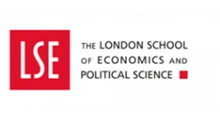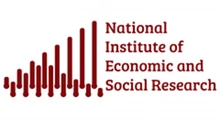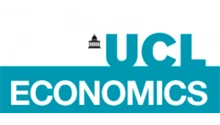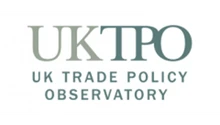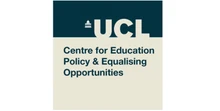The United States has announced deep cuts to its foreign aid programmes, including pausing activity at the country’s main federal aid agency. This is likely to increase the spread of infectious diseases in lower-income countries, as well as magnifying global economic and geopolitical instability.
Cuts to foreign aid could have a substantial negative effect on public health around the world. The recent pause in activity at the US Agency for International Development (USAID), as well as cuts to other forms of American foreign aid, is already causing a major disruption to the global response to public health threats such as HIV/AIDS, malaria and tuberculosis (TB).
These funding freezes by the Trump administration have the potential to reverse years of progress against deadly diseases. For many developing countries, an overreliance on external donor funding means that they are highly vulnerable to fluctuations in support from Western powers such as the United States. The sudden drop in aid funding has brought this vulnerability into sharp focus.
How has aid spending evolved over the past century?
Foreign aid has played a major role in shaping global public health improvements over the past half century. In the aftermath of the Second World War, newly minted international organisations like the World Health Organization (WHO) and United Nations (UN) agencies including UNICEF and UNAIDS succeeded in delivering large-scale disease eradication programmes. These included the elimination of smallpox in 1980 and polio in 1999 (WHO).
The United States started taking a bigger role in global development assistance following the establishment of USAID in 1961. American involvement rose further with the President’s Emergency Plan for AIDS Relief (PEPFAR) in 2003. With the introduction of the Millennium Development Goals (MDGs) in the 2000s, donor funding expanded significantly, with major initiatives such as the Global Fund to fight AIDS, Tuberculosis and Malaria (known as TGF) and Gavi, the Vaccine Alliance, each receiving substantial funding from Washington.
Since 2001, US funding for global health has grown nearly ten-fold, increasing from about $1.7 billion to $12.3 billion by 2024 (KFF, Kaiser Family Foundation). These investments have had large positive payoffs: one estimate suggests that between two and six million lives are saved every year by US health assistance (Center for Global Development).
Which countries receive the most aid?
Foreign health aid is usually directed to countries with high disease burdens and low per capita incomes. Over the years, many recipients have been in sub-Saharan Africa and parts of South Asia. In recent years, the largest countries by international health aid received include Bangladesh, Ethiopia, Nigeria, the Philippines and South Africa (see Figure 1).
The health outcomes that have been achieved in many of these countries would have not been attainable with domestic resources alone. For example, in Pakistan, over 36 million children were vaccinated thanks to support from Gavi. Between 2000 and 2011, Pakistan received over $316 million from the vaccine alliance to fund its inoculation programme (Center for Global Health and Development).
Figure 1: Total development assistance for health received, 2022
Source: IHME
What is Washington’s role in international donor funding for global health?
In 2023, the US government spent $20.6 billion on global health, accounting for 32% of total worldwide spending (IHME, Institute for Health Metrics and Evaluation). Of this, $14.6 billion came in the form of direct foreign aid through bilateral global health programmes, while the remaining sum was disbursed through international organisations and NGOs (see Figure 2).
Among the most notable agencies supported by the United States is TGF – the largest multilateral provider of health grants for lower- and middle-income countries. As it stands, TGF provides about 28% of all international financing for HIV programmes, 62% for malaria and 76% for TB.
Since TGF’s inception in 2001, the US government has provided around a third of the project’s funding ($26.3 billion out of $78.5 billion). For the 2023-25 funding cycle, the US government committed $6 billion in pledges (out of the total $14.3 billion), representing around 42% of TGF’s budget.
Figure 2: United States global health funding flows, 2023.
Total dollars spent for all sources, channels, and health focus area

Source: IHME
What might be the impact of aid cuts on funding to tackle TB?
Global efforts to combat TB are extremely dependent on funding from TGF. Even today, TB is the world’s leading infectious killer, with approximately ten million people becoming ill and 1.5 million dying from the disease each year.
In many lower- and middle-income countries, TGF serves as the primary external funding source for TB control programmes, providing up to 80% of the national TB budget in certain cases like the Central African Republic, Mozambique and Pakistan (see Figure 3). Lower per capita income levels, higher debt, weaker governance, less effective health systems and greater inequality are some of the underlying reasons why such countries continue to be heavily reliant on international support and face difficulties making the transition to domestic funding, especially in light of sudden funding changes (Brookings Institution).
Some middle-income countries – including Brazil, India and South Africa – largely fund their own health programmes. Even so, they still benefit from aid for specific gaps or other health research projects and technical assistance.
Figure 3: Country-level financing for TB
Sources of funding for TB management and budget gap, select countries, 2024
Source: WHO
The US government is by far the largest source of international donor funding for TB, accounting for about 49% of global support for services, and contributing up to $250 million annually to TGF alone (Center for Global Development, 2025). It is estimated that this translates into roughly three million lives saved per year, at an implied cost of $2,150 per person treated (this is a model-based estimate using treatment figures from a 2023 WHO report).
The 2025 funding cuts could have a devastating impact on TB programmes. This is likely to be felt most acutely in lower- and middle-income countries that rely heavily on international aid. Indeed, the round of cuts announced by the Trump administration have already put 18 of the highest-burden countries (mostly located in Africa, Southeast Asia and the Western Pacific) at risk. For example, reporters from Cambodia, Nigeria and Pakistan have stated that the aid cuts are mainly coming in the form of active case finding and community outreach – both essential early stage measurements that prevent stronger outbreaks of diseases (CNN).
Since 24 January 2025, it is estimated that there have been 10,566 additional TB-related deaths and 13,426 new TB infections associated with the funding discontinuation (Stop TB Partnership). According to the same study, there are potential alarming long-term implications: if the funding freeze continues: there could be over 2.2 million additional TB deaths and 10.6 million additional TB cases globally by 2030 (Tuberculosis Impact Counter, 2025).
This is just one of the many examples of how aid cuts can affect responses to diseases. Similar stories have been reported for other major health threats. In Indonesia, around 40% of HIV/AIDS prevention funding comes from international donors, and the USAID freeze has led to hundreds of field officers being laid off (University of Washington). On the other hand, some governments, including those of Malawi, the Philippines and South Africa, have announced increased domestic expenditure on AIDS responses (UNAIDS).
The United States has been the biggest donor, but it is not the only country that has been reducing its aid spending. In January 2025, the UK also announced that it would reduce its aid budget from 0.5% to 0.3% of GDP by 2027. With such suspensions, there are concerns among critics that Western countries are leaving an ‘aid vacuum’ and allowing geopolitical rivals like China and Russia to expand their influence in the Global South (University of Washington).
Conclusion
The discontinuation of global health funding by the United States poses a severe threat to the fight against TB and other infectious diseases. The immediate impacts are already visible, with disruptions in essential health services and increases in TB cases and deaths. If the funding freeze continues, the long-term consequences are likely to increase at an unpreceded rate, potentially reversing decades of efforts to combat TB and other deadly illnesses.
As the world becomes increasingly interconnected, the health challenges faced by one country can quickly become global concerns. This was made clear during the Covid-19 pandemic. Cuts to foreign aid not only pose a risk to those within the country, but also increase global vulnerability to disease outbreaks, migration pressures and overall economic instability.
With these increasing pressures on aid budgets, there will be renewed emphasis on reforming the international financial system to enable low-income countries to manage their health expenditure more effectively. At the same time, the current (and unprecedented) change in US aid support underscores the need for expanded global cooperation, which includes engaging private donors to establish a more resilient and sustainable global health infrastructure.
Where can I find out more?
- Navigating US global health aid cuts: What can past donor exits teach us?: report from the Brookings Institution.
- On American aid cuts/disruptions: blog post by Ken Opalo on the future of public health in Africa.
- How many lives does US foreign aid save?: blog from the Center for Global Development calculating the impact of global health funding.
Who are experts on this question?
- Abhijit Banerjee
- Esther Duflo
- William Easterly
- David Heymann
- Paul Collier

















